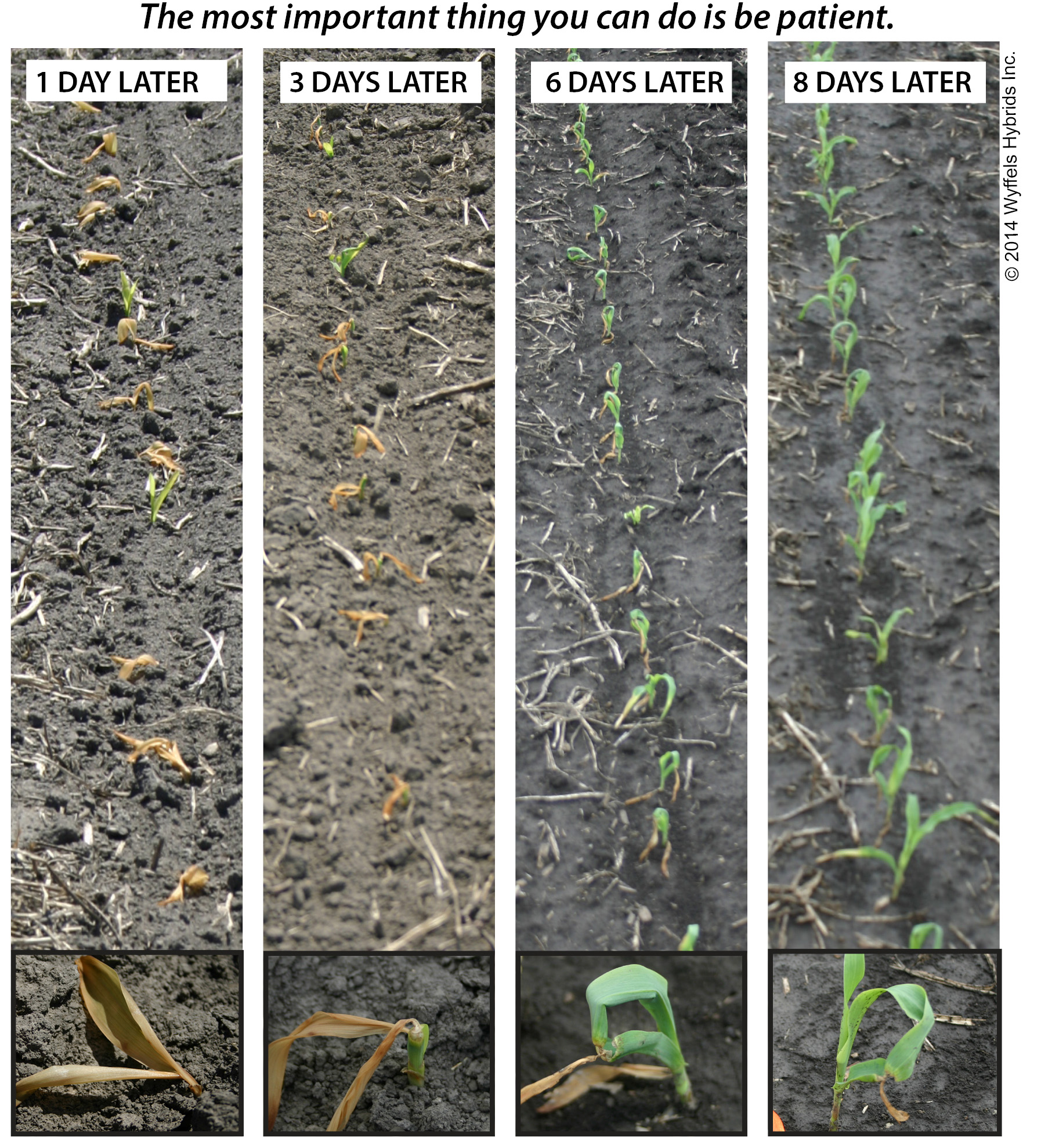frost and freeze damage to corn
Recent freezing temperatures may impact both emerged and unemerged corn. The most damage occurs when soil temperatures drop below freezing, as freezing temperatures are lethal to the seedling’s growing point. If soils stay above freezing but air temperatures dip below freezing, aboveground tissue may die, but if the growing point remains intact below ground the corn can recover. Actual air temperature, soil moisture conditions, stage of growth, tillage, and length of cold period all can influence the amount of damage that may occur.
Patience is Key
The growing point of a corn plant remains about 1/2 inch below ground until about the 5-collar stage, which keeps the plant reasonably protected from the effects of above ground frost. Frost damage to corn is usually minor and limited to above ground plant tissue. Corn can easily recover from this type of injury early in its development and suffer no yield loss.
When air temperatures drop to lethal levels (28o F or less) for more than a few hours, the growing point of a young corn plant can be injured or killed even if it is still below the soil surface. The degree of lethal damage that occurs (even at 28o F or less) depends on your soil type and the amount of moisture in your soil. Corn plants in sandy soil or in very dry soil are more prone to freeze damage. Corn planted in lowlying areas may experience lower temperatures than other areas in the field.
The key requirement for assessing freeze damage is to be patient and to allow the plants to recover. While corn leaves may blacken and wither within a day after frost occurs, the true extent of plant damage may not be evident. After three to five days, surviving corn plants should be showing new leaf tissue expanding from the bleached or straw-colored whorls. If a significant portion of the population is obviously dead after this same period of time, then replanting may be justified.

Another way to assess whether a plant will survive is to split the plant in half (the below ground portion). A brown discoloration in the interior of the plant at the growing point indicates the plant will not survive. A white or light green color indicates a live plant with a chance to continue development.
Wait to apply postemergence herbicides and fertilizers following a frost. Weeds won’t be controlled unless they are actively growing, and corn won’t metabolize the herbicide effectively which will lead to greater risk of injury. Another point to keep in mind—if frost injured corn was at the V2 growth stage when the frost set in and ends up losing two leaves because of the injury, when that plant resumes growth and two new leaves are produced the plant is now at V4, not V2. This is a common misunderstanding that can have detrimental effects, especially if you apply a herbicide when the corn plant is actually at V6 or V7, but you thought it was only V3-V5

